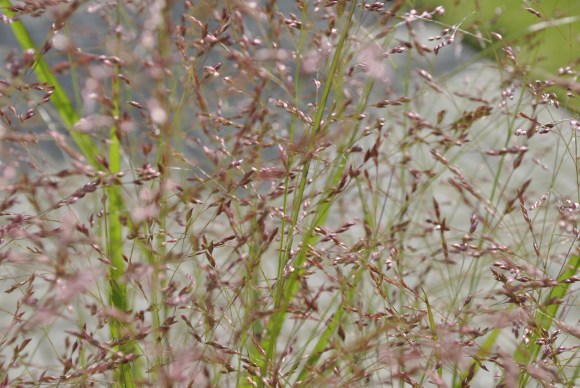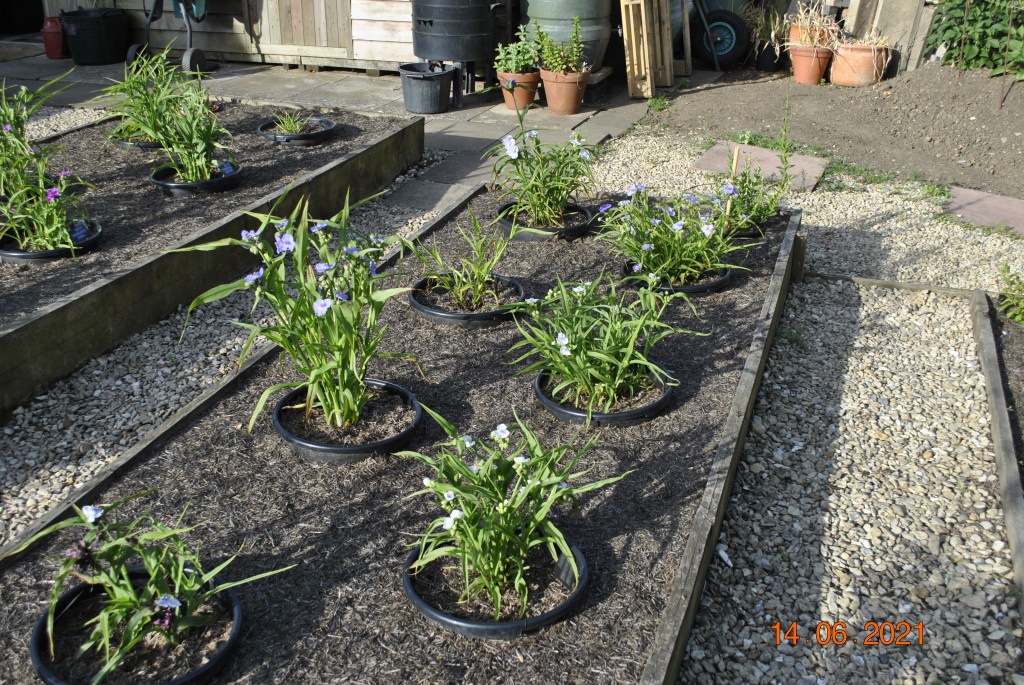
So excited! My immature Fox Grape, Vitis labrusca ‘Isabella’ has produced one bunch of beautiful sweet fruits which will be picked and eaten in a few days. Now I have to find somewhere in the garden to put it. It has survived in a large pot for three years, but now it is bearing fruit I will have to find it a permanent place against a sunny wall to train it as the growth next year will be substantial and it will be starved of water and nutrient in a pot.

Grasses are difficult to photograph! This beautiful Panicum virgatum ‘Purple Tears’ is a case in point. Chest high and wide, it is at its peak now with wonderful photogenic seed heads that sway in the slightest breeze but on which the camera struggles to focus! Still, you get the point!

I have stopped growing Symphyotrichum as I found them weedy and needing support, often attracting mildew and generally unattractive. This one, however, is dainty and low growing Aster ageratoides ‘Stardust’ which is a healthy, well behaved, self supporting species aster which slowly spreads to form an attractive colony of pretty white daisies in September and October. It is loved by pollinators and provides plentiful nectar just at a time when most summer flowers are going over. Very easy to propagate by division or semi-rooted cuttings, totally hardy and as one knowledgeable nurserywoman pointed out to me, hides its dead flowers with new ones!

Still going strong and showing no signs of slowing down, Diascia personata continues to provide colour in various spots in the garden. This was a leftover cutting from last year and has been in flower since May in a pot. In the ground they can get quite tall and need supporting to stop them flopping and swamping adjacent plants, but they do less damage in a pot!

Another difficult subject to photograph is this Solidago rugosa ‘Fireworks’ which, as the name implies, shoots off its flowers in all directions in a wonderful display which goes on for weeks and weeks. Another easy late summer/early autumn border filler which goes particularly well with purple Symphyotrichum at this time of year.

Still a few cornflowers about. Was there ever a more true blue flower?

My first time growing some ginger lilies, this one is Hedychium flavescens with its spidery, heavily sweet scented blooms and spear-like dark green leaves which bring a tropical look to the late summer border. Surprisingly easy to grow from their fleshy rhizomes and undemanding in pots, they would do well in a conservatory but are hardy enough to be grown outdoors with a little winter protection.
The last few flowers on my Tradescantias before they are cut back this weekend. It has been a great first year for my new hobby which received National Collection status from Plant Heritage earlier this month. I have currently amassed over 40 species and cultivars of T. virginiana and T. Andersoniana Group which is roughly three quarters of those available in the UK but I am keen to find a way of bringing others in from the USA if and when phytosanitary rules allow.
Have a great weekend
David








